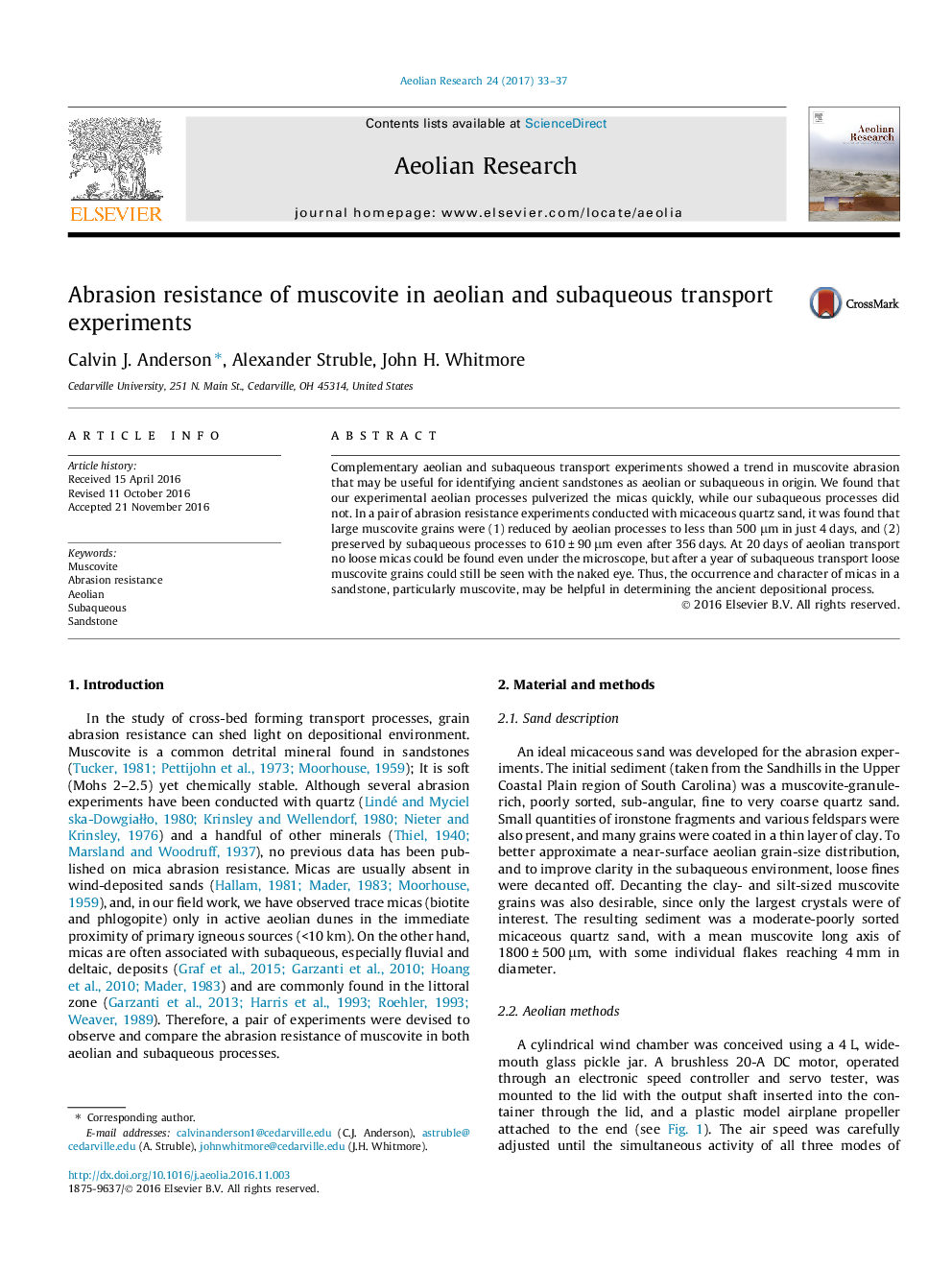| Article ID | Journal | Published Year | Pages | File Type |
|---|---|---|---|---|
| 5779057 | Aeolian Research | 2017 | 5 Pages |
Abstract
Complementary aeolian and subaqueous transport experiments showed a trend in muscovite abrasion that may be useful for identifying ancient sandstones as aeolian or subaqueous in origin. We found that our experimental aeolian processes pulverized the micas quickly, while our subaqueous processes did not. In a pair of abrasion resistance experiments conducted with micaceous quartz sand, it was found that large muscovite grains were (1) reduced by aeolian processes to less than 500 μm in just 4 days, and (2) preserved by subaqueous processes to 610 ± 90 μm even after 356 days. At 20 days of aeolian transport no loose micas could be found even under the microscope, but after a year of subaqueous transport loose muscovite grains could still be seen with the naked eye. Thus, the occurrence and character of micas in a sandstone, particularly muscovite, may be helpful in determining the ancient depositional process.
Related Topics
Physical Sciences and Engineering
Earth and Planetary Sciences
Atmospheric Science
Authors
Calvin J. Anderson, Alexander Struble, John H. Whitmore,
